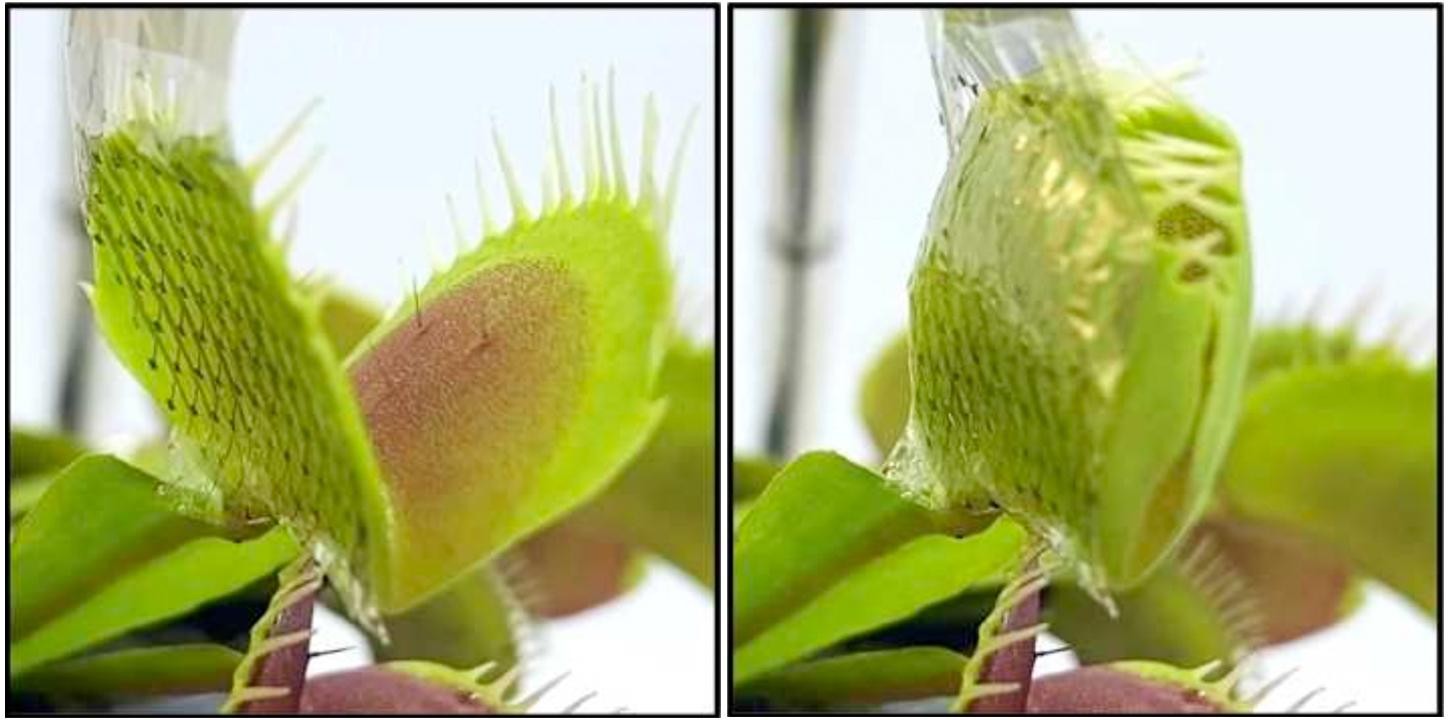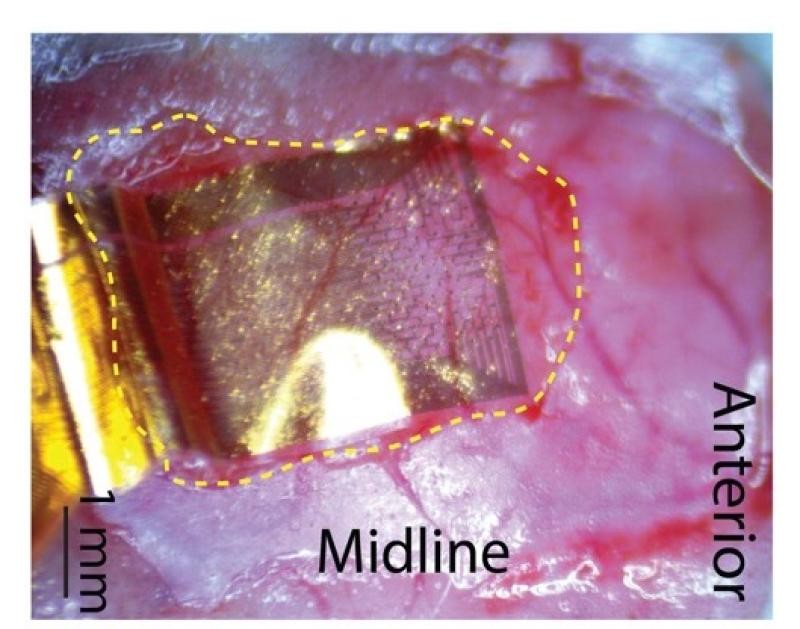The Neuroscience of Venus Flytraps

Plants may not have brains, or even nervous systems, but they do send electrical signals through their bodies (even if calling such activity “plant neurobiology” is a bit of a stretch).
But the technology to measure electrical signals in plants is not very advanced.
So when Swedish plant scientists wanted to understand how the carnivorous Venus flytrap plant uses electrical signals to ensnare its prey, they turned to a pair of Columbia neuroscientists for advice.
How to study electrical plants
Venus flytraps catch ants, beetles, and flies when the insects brush against sensory hairs on the inner side of plant’s two lobes. The hairs trigger electrical signals and the two lobes snap together, trapping the prey.
To better understand what triggers the electrical signals and where they go, the plant scientists needed recording devices that could pick up weak signals.
That requirement closely matched the unique recording devices designed and tested by two Columbia scientists—Jennifer Gelinas, MD, PhD, in the Department of Neurology and Dion Khodagholy, PhD, in the Department of Electrical Engineering—to record electrical activity in the brain.
Like Saran wrap that records activity of neurons
Most electrophysiological devices that record brain activity are made from electrodes that have a metallic surface, and they cannot conform to bending surfaces.
That’s a problem, because if the recording grids cannot maintain close contact with irregular biological surfaces, signal-to-noise ratio is low and the grids cannot pick up weak signals at high resolution.

In contrast, the NeuroGrids created by Khodagholy and Gelinas are made from conducting polymers that allow the researchers to build devices that resemble clingfilm and can closely conform to the curved surfaces of the brain (or the tiny pits and bumps of a plant).
“We've been able to show that just by placing this device on the surface of the brain, we can get a lot more information than was really thought possible,” Gelinas says.
A few simple modifications to the NeuroGrids allowed the plant scientists to wrap them around a lobe of the Venus flytrap and pinpoint the source of the plant’s electrical signals.
NeuroGrids pick up previously hidden brain activity
The NeuroGrids have the potential to accelerate research with human subjects and lead to new discoveries in epilepsy and other brain disorders.
Conventional electrodes that are used today in patients with brain disorders “can only tell us what groups of neurons are doing in concert, we can’t parse out what any one individual neuron is doing,” Gelinas says.
“But with these NeuroGrids, we’re able to detect signatures of individual neurons and determine the types of neurons that are participating in a pathological activity in the human brain, without penetrating brain tissue.”
Gelinas’ lab has also used the NeuroGrids in animals to discover new types of brain activity involved in learning and memory. And because the grids are very soft and biocompatible, they can remain implanted in the brains of animals for prolonged periods of time, which is helping the lab understand how cortical networks encode memory and come online very early during development.
Coming soon? Tiny implantable brain stimulators
Even better devices are in development.
“Our goal is to come up with a device that is completely conformable and can transmit data wirelessly to receivers outside the brain, without any parts extruding from the body,” Khodagholy says. That means everything—sensors, transmitters, and a power supply—must be contained in the brain implants, and be biocompatible and safe.
Silicon-based technology, like that used in our mobile phones, can be made very small but needs to be protected from the watery insides of the body in rigid containers that are too bulky for use in the brain.
Khodagholy’s lab recently developed an implant that doesn’t need to encapsulated from organic and conformable transistors, each about 100 times thinner than a human hair.
The transistors can pick up and transmit brain signals and power the implant, which should lead to new diagnostic and therapeutic brain implants.
Gelinas sees such implantable devices as a way to treat epilepsy, for a start. “These devices could detect epileptic activity and deliver stimulation to suppress this pathological activity while enhancing physiologic brain patterns.”
More information
Jennifer Gelinas, MD, PhD, is assistant professor of neurology (in the Institute for Genomic Medicine and the Gertrude H. Sergievsky Center) at Columbia University Vagelos College of Physicians and Surgeons and a pediatric neurologist at NewYork-Presbyterian/Columbia University Irving Medical Center.
Dion Khodagholy, PhD, is associate professor of electrical engineering at Columbia's Fu Foundation School of Engineering and Applied Science.
The Venus flytrap study, "Plant electrophysiology with conformable organic electronics: Deciphering the propagation of Venus flytrap action potentials(link is external and opens in a new window)," was published in Science Advances in July 2023. Read more(link is external and opens in a new window) about the study on the Linköping University website.
The study on the latest implants developed by Khodagholy and Gelinas, "Integrated internal ion-gated organic electrochemical transistors for stand-alone conformable bioelectronics(link is external and opens in a new window)," was published in Nature Materials in July 2023. Read more about the organic transistors on Columbia Engineering's website.